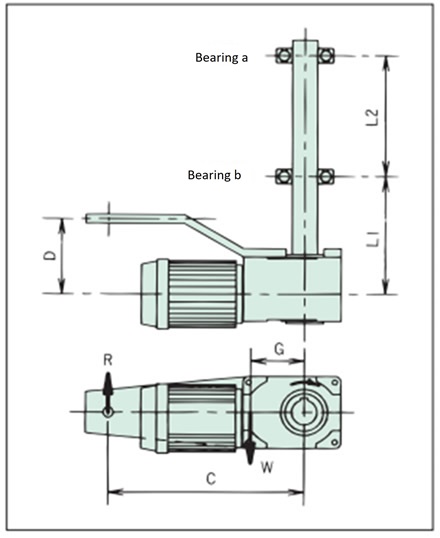Technical Data Reducers DCBL Hypoid Motor Handling
This section describes the general handling of DCBL Hypoid Motor & Driver.
For more information, see the instruction manual provided with the product.
Torque arm design
Whether a standard torque arm is used or whether you design and make a torque arm, check the strength of each element in the following manner.
1. Check the torque arm and fixing bolt
Check according to the torque arm reaction force R.
R = T + W × G C
2. Selection of bearing
Check according to the bearing reaction forces A and B.
A(Bearing a ) = L1 × (R - W) -D × R L2
B(Bearing b ) = (L1 + L2) × (R - W) - D × R L2
*For the direction of rotation shown in the figure to the left, the output torque is positive. When it is reversed, the output torque is negative.
- T:Output torque N・m{kgf・m}
- W:Weight of reducer kg{kgf}
- R:Torque arm reaction force kg{kgf}
- G:Distance between center of driven shaft and center of gravity of reducer m
- C:Distance between center of driven shaft and rotation stopper m
- D:Distance between center of reducer and rotation stopper m
- L1:Distance between center of reducer and bearing b m
- L2:Distance between bearing a and bearing b m

Dimensions when optional torque arm is used (These are approximate values. )
| Model No. | DCHM020-20H10~60 | DCHM040-30H10~50 | DCHM075-35H10~50 |
|---|---|---|---|
| G | 0.067m | 0.065m | 0.108m |

